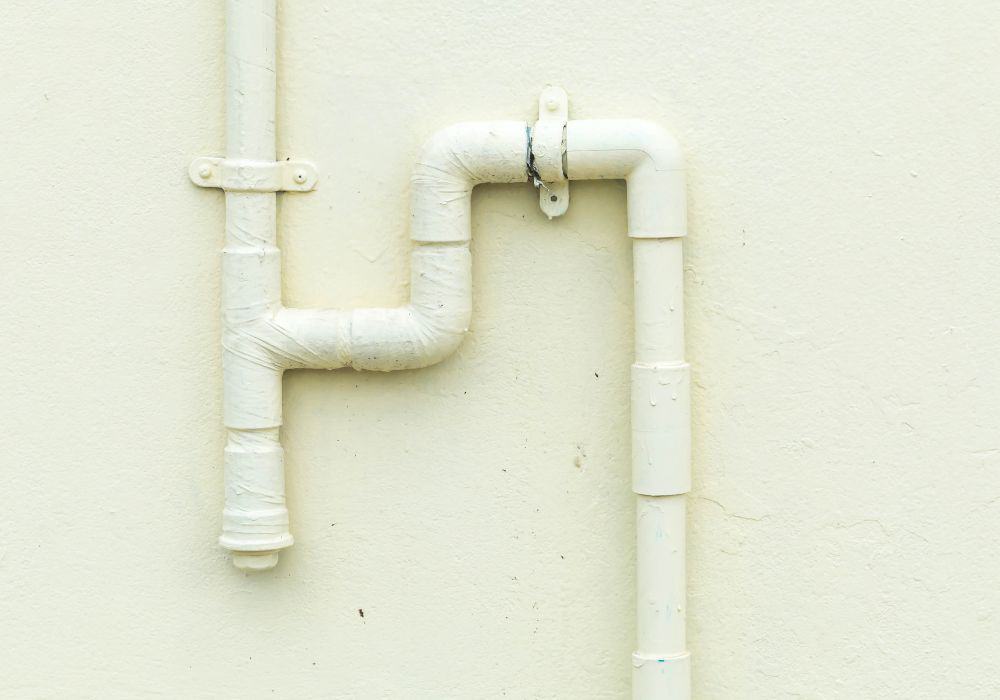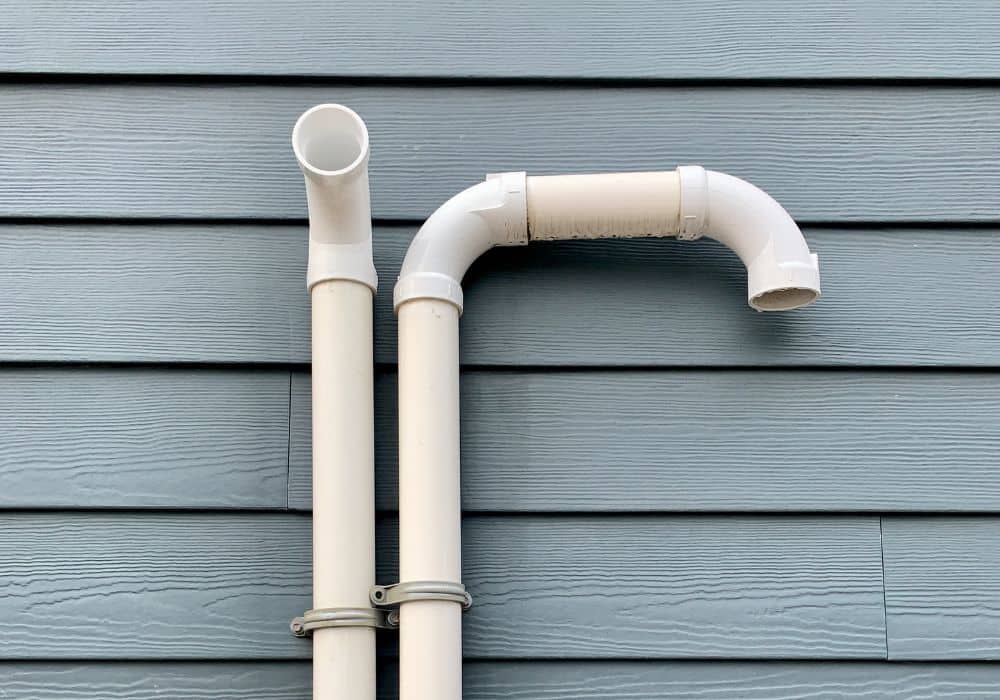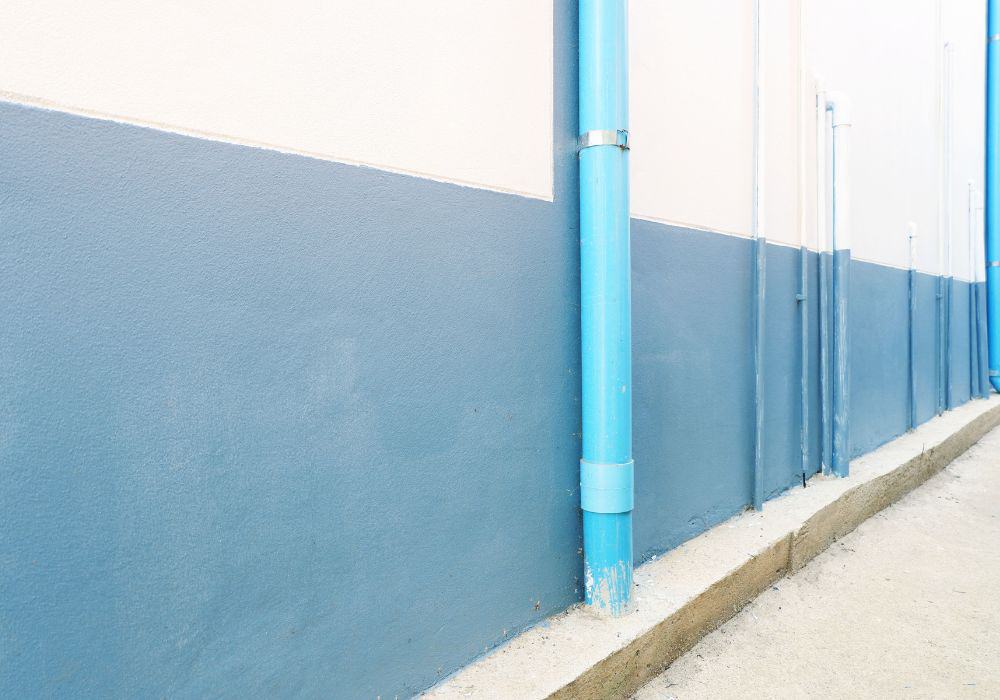An outdoor space can be an amazing retreat from the world, but it’s hard to relax when you can see and hear those pesky exterior pipes. The sound of rushing water and the sight of browning PVC is not exactly the relaxing oasis that you want your garden to be.
Fortunately, there are plenty of solutions that don’t require a lot of money or time. You just need a little creativity and willingness to explore unconventional ideas.
Keep reading for the best ideas on how to hide PVC pipe outside so you can achieve visual bliss in your backyard.
How To Hide PVC Pipe Outside?

1. Build A Fence
A fence would be perfect if the plumbing pipes are exposed to the elements. If you live in a climate where it can get cold and windy, the pipes could freeze and crack.
Depending on what type of fencing you choose, you can even add some color to match the paint color of your home.
- If you don’t want to keep the fencing up all year round, you can use a decorative fence that can be taken down during the winter
- There are many styles of fencing that can easily be folded up and stored away for the colder months
- Fences are also a great way to add some height to your outdoor space. Taller fencing creates a more secluded feeling, which is great if you want to keep prying eyes out of your backyard. They also provide privacy and can enhance the look of your backyard.
Typical fencing materials include stone, wood, or metal, and can come pre-build from a hardware store, or from your own imagination.
2. Grow Some Plants
Plants and trellises are a great way to hide the pipes, but you might not want to line the entire length of your exterior water supply. Instead, choose a few specific plants and place them strategically around the pipes.
- Vines
If you have a small garden, you can grow vines on the wall or fence surrounding the pipes. Plant vines like clematis or morning glory grow quickly, so they can quickly cover up the pipes. Just be careful not to let the vines get too invasive and start covering everything else in your yard
- Shrubs and Flowers
You can also plant shrubs and flowers around the pipes to blend them in. Some plants, like hydrangeas (hanging plants examples) are great for covering up bare spots in the yard and look beautiful while doing it.
If you don’t have a large enough garden, you can grow plants in pots – think easy-to-maintain stone or orpine or feathered pink dianthus plants
- Foliage
Give your outside space a tropical feel by wrapping foliage around exposed pipes. Fake foliage is a low-maintenance way to hide exposed pipes. Real foliage is best achieved with creepers and climbers
- Trees
If your backyard has enough space, you can also take this one step further and create a forest, with tall trees and dense shrubs surrounding the entire area. This will make the pipes almost disappear from sight
There are many different types of vines and plants that grow beautifully in containers, so you don’t have to worry about having enough soil space for them.
Try to avoid ivy, holly, and boxwood shrubs as these have a tendency to grow unruly and could cause problems with your vent pipe system.
3. A Bench Or Other Seating Area

If your pipes run horizontally and are close to the ground a bench is a good way to hide them while providing an extra seating area for your backyard. This can be a good option if you have long, straight pipes that are easy to hide.
Build Your Bench
Building a bench will require some work, but it is a good long-term investment and is a great way to get a functional piece of furniture in your yard. It doesn’t take much effort, and you can build one out of almost anything.
You can even use pallets to build a sturdy bench that you can use for many years.
- Whatever type of pallet you get, make sure it is big enough to hold the weight of the person sitting on it
- Be sure to also account for any extra weight that might need to be supported by the bench, such as a heavy bag or bag of groceries
- Once you have chosen your materials, all you have to do is start building! Use whatever tools you have available, such as saws and hammers
- If you want to build a bench with legs, attach the legs to the top first before attaching them to the base. This will allow for more stability without having to support them both at once
- If you are using a piece of wood that is less than 6 inches thick, make sure it is sturdy enough by attaching additional pieces underneath and across the back of it where there might be places for people to sit.
4. A Stone Wall
A stone wall is a great way to hide the pipes and add style to your backyard at the same time. You can either build a straight wall that completely covers the pipes or build a more decorative wall that partially covers the pipes.
If you build a wall that partially covers the pipes, makes sure that the area behind the wall is still accessible in case of damage and repairs.
Building a stone wall might sound difficult, but there are many do-it-yourself kits available that will walk you through the process. If you don’t have time to build a wall yourself, you can also hire a landscaper or contractor to do the work for you.
These types of materials are easy to install and will last for many years. You can easily find these materials at any home improvement store.
5. Planters And Colored Rocks
This is one of the more creative ways to hide the exterior pipes. This method involves building planter boxes and using them to partially hide the pipes. Planter boxes are easy to build and can be placed on either side of the pipes.
They are also a great way to add some color and beauty to your backyard.
- Some of the most durable and evergreen planets include petunia, impatiens, creeping phlox, celosia, marigolds, and geraniums
- To give the planters an extra pop of color, use colored rocks to line the bottom of the boxes.
6. Paint The Pipes

Painting the pipes is one of the most basic ways to hide them, but it can be just as effective as any other solution. You can use any color you like, so you have plenty of options.
- Affordable
One of the main benefits of paint is that it’s relatively cheap and easy to find. You can choose from several different types of paint, such as latex, acrylic, oil-based, or even spray paint.
- Maintenance
The main drawback of this solution is that it requires a lot of maintenance. The paint needs to be refreshed every few years to maintain its optimal appearance.
UV rays from sunlight can fade paint and rust over time, so you’ll need to repaint more often during the summer months.
7. Build Boxes Around The Pipes
You can choose any kind of material you’d like, depending on the style of your home.
There are all kinds of decorative wood pieces and other materials that you can use to build a wooden box around the pipes. Plus they’re great for extra storage.
Potted Plants
Then place some decorative potted plants on top of the boxes. In addition to looking great in a flower bed, these potted plants will create some nice garden symmetry by covering your pipes as well.
- Agapanthus
- Buddleia ‘Buzz’
- Hosta
- Pittosporum tenuifolium
- Skimmia japonica
- Euonymus
- Hebe
For this solution to work, you’ll need a lot of extra space around the pipes. However, it’s not as expensive as other solutions, and it’s easy to do yourself with a little bit of carpentry and DIY skill.
8. Use Decorative Covers
Decorative pipe covers are similar to standard ones, but they’re often more stylish and fit into your décor better.
- Decorative covers are available in all kinds of materials, including plastic, metal, and fabric
- They also come in a variety of styles, including mesh, solid, and stained wood
And don’t worry, they’re not just decorative, they actually work, too.
The main drawback of this solution is cost. Decorative covers are often more expensive than traditional ones. However, if you care about aesthetics, they can be worth every penny.
9. Make Them Blend In
Blending pipes in with your landscaping is a great way to make them less obvious, but it requires a little more creativity. It can also be a great opportunity to add some character to your outdoor space.
You can accomplish this by covering the pipes with faux rocks or tree trunks.
The tree trunks especially come in many color and style options to match your garden’s style.
- There are some pipe covers that are hollow with solid sides that cover vertical pipes
- Others have holes on both sides that allow water to flow through
- You can make this option look more natural by painting the base of the trunk with brown paint and adding moss and leaves to the top
Once you’re done, your PVC pipes will look like a real tree!
Conclusion
Exterior pipes can be a real eyesore in your backyard. Thankfully, there are plenty of ways to hide them. If you want to make the pipes less noticeable, you can use any of these easy solutions.
You just need to be willing to be creative and explore some unconventional ideas. With the right combination of plants and decoration, your backyard will be a space that you love to spend time in.
And you’ll be able to do so while completely forgetting that those pesky exterior pipes are even there.
